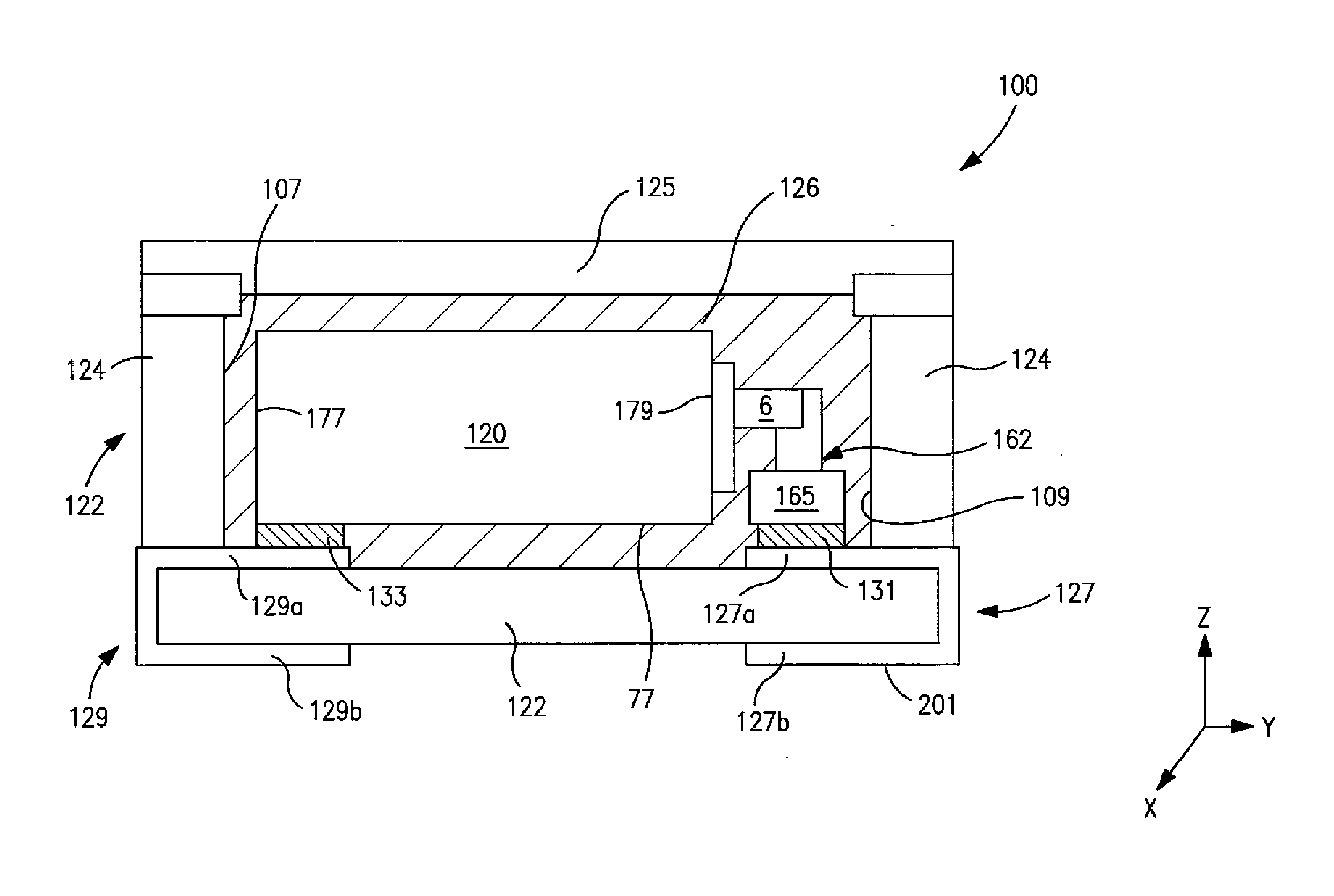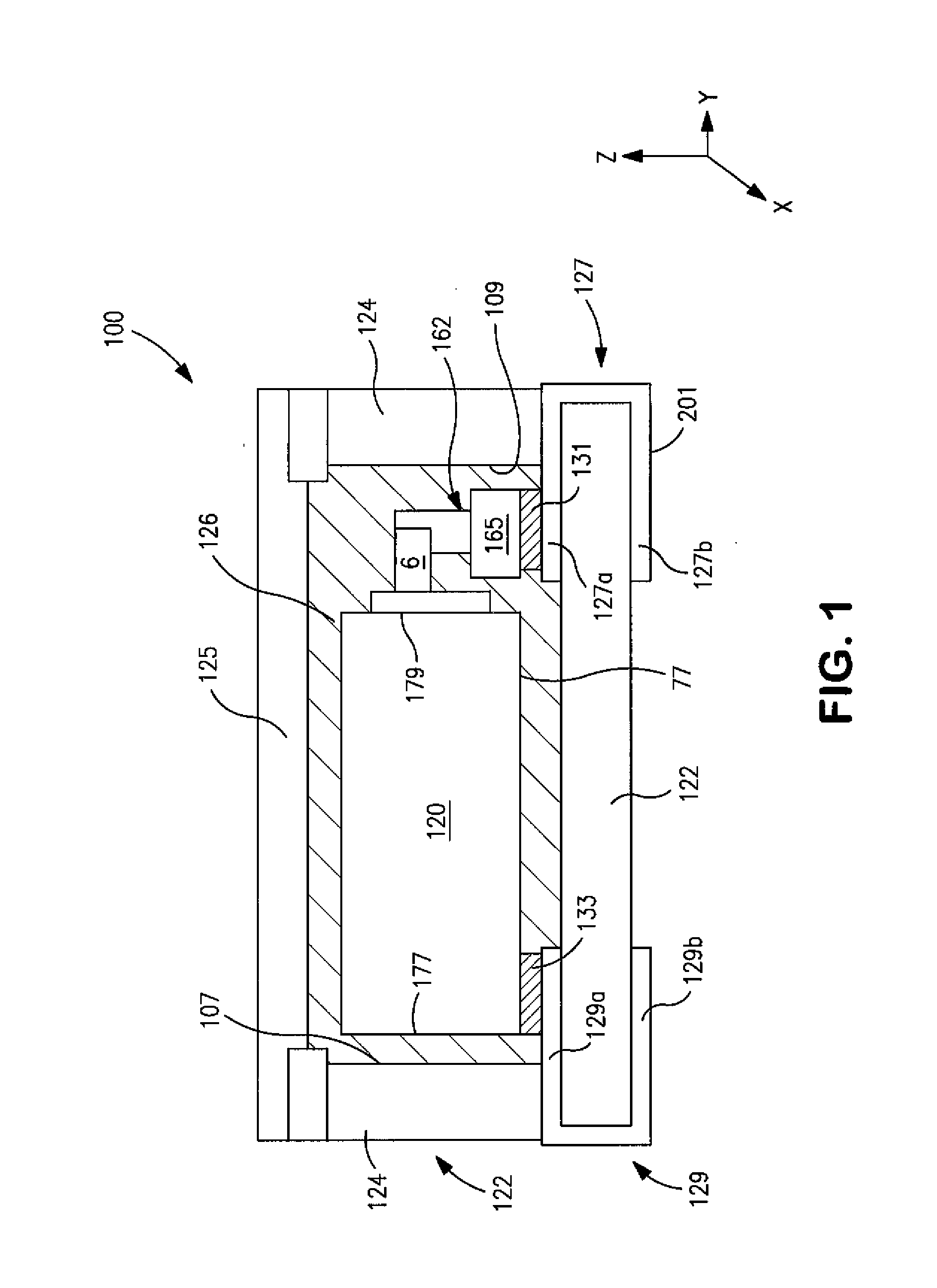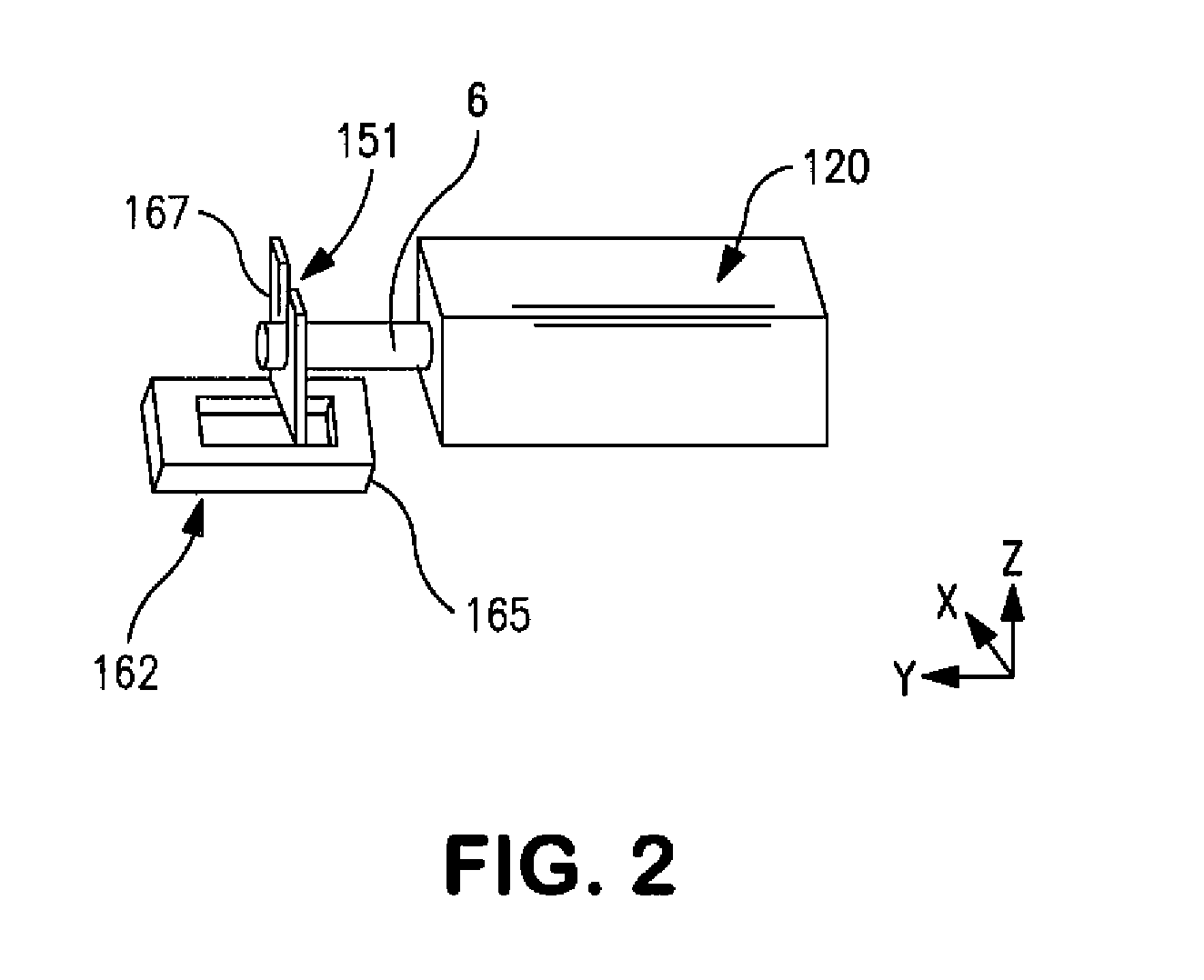Solid Electrolytic Capacitor for Use in High Voltage and High Temperature Applications
a technology of solid electrolytes and capacitors, which is applied in the manufacture of electrolytic capacitors, capacitor details, capacitors, etc., can solve the problems of poor stability of solid electrolytes at high temperatures
- Summary
- Abstract
- Description
- Claims
- Application Information
AI Technical Summary
Problems solved by technology
Method used
Image
Examples
example
[0076]A tantalum anode with a size of 5.2 mm (length)×3.7 mm (width)×0.85 mm (height) was anodized at 120V in a liquid electrolyte to 10 μF, A conductive polymer coating was then formed by dipping the anode into a dispersed poly(3,4-ethylenedioxythiophene) having a solids content 1.1% (Clevios™ K, H.C. Starck). Upon coating, the part was then dried at 125° C. for 20 minutes. This process was repeated 6 times. Thereafter, the part was dipped into a dispersed poly(3,4-ethylenedioxythiophene) having a solids content 2% and dried at 125° C. for 20 minutes. Once again, this process was repeated 6 times. External carbon and silver coats were formed for finishing the manufacturing process of the anodes.
[0077]A standard copper-based leadframe was used to finish the assembly process. One portion of the leadframe was attached to the lower surface of the capacitor element with a silver adhesive. The tantalum wire of the capacitor element was then laser welded to another portion of the leadfram...
example 2
[0079]A tantalum anode with a size of 1.8 mm×2.4 mm×1.2 mm was anodized at 16V in a liquid electrolyte to 150 μF. A conductive polymer coating was then formed by dipping the anode into a butanol solution of iron (III) toluenesulfonate (Clevios™ C, H.C. Starck) for 5 minutes and consequently into 3,4-ethylenedioxythiophene (Clevios™ M, H.C. Starck) for 1 minute. After 45 minutes of polymerization, a thin layer of poly(3,4-ethylenedioxythiophene) was formed on the surface of the dielectric. The parts were washed in methanol to remove reaction by-products, anodized in a liquid electrolyte, and washed again in methanol. The polymerization cycle was repeated 12 times. The parts were then coated by graphite and silver and assembled into a ceramic housing as described in Example 1.
[0080]For life testing purposes, the parts of Examples 1 and 2 were placed in an oven at 125° C. (with an applied voltage equal to the rated voltage) and at 200° C. (with an applied voltage equal to 50% of the ra...
PUM
| Property | Measurement | Unit |
|---|---|---|
| Diameter | aaaaa | aaaaa |
| Electric potential / voltage | aaaaa | aaaaa |
| Breakdown voltage | aaaaa | aaaaa |
Abstract
Description
Claims
Application Information
 Login to View More
Login to View More - R&D
- Intellectual Property
- Life Sciences
- Materials
- Tech Scout
- Unparalleled Data Quality
- Higher Quality Content
- 60% Fewer Hallucinations
Browse by: Latest US Patents, China's latest patents, Technical Efficacy Thesaurus, Application Domain, Technology Topic, Popular Technical Reports.
© 2025 PatSnap. All rights reserved.Legal|Privacy policy|Modern Slavery Act Transparency Statement|Sitemap|About US| Contact US: help@patsnap.com



